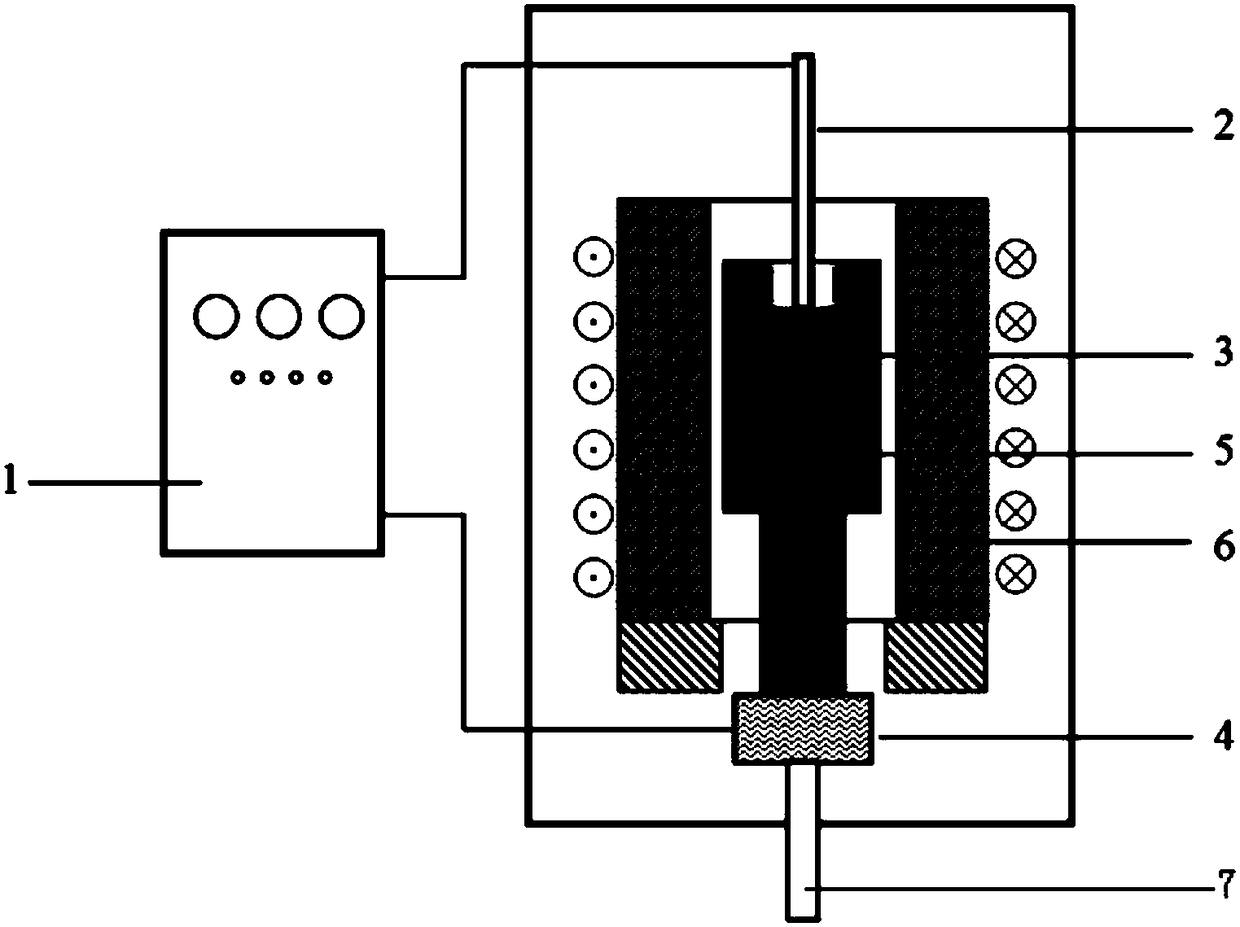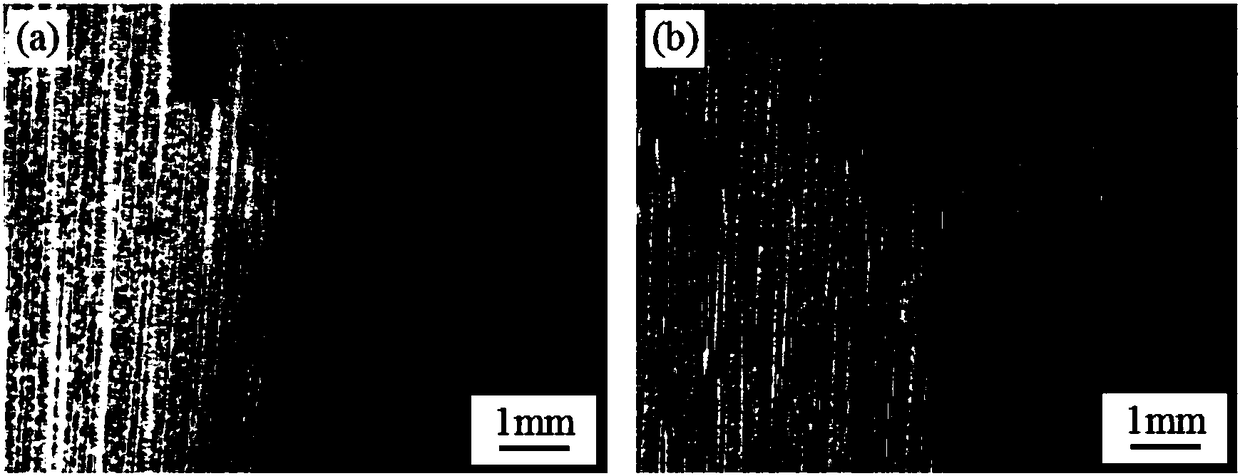Method capable of reducing mixed crystal formation at section abrupt-change portion of single-crystal high-temperature alloy
A high-temperature alloy and single crystal technology, which is applied in the direction of single crystal growth, single crystal growth, chemical instruments and methods, etc., can solve the problems of easy formation of miscellaneous crystals, etc., and achieve the effects of low current density, convenient operation and simple equipment
- Summary
- Abstract
- Description
- Claims
- Application Information
AI Technical Summary
Problems solved by technology
Method used
Image
Examples
Embodiment 1
[0033] like figure 1 As shown, in this embodiment, the mold 5 is fixed on the water-cooled plate 4 and placed in a heating furnace for preheating for 1 hour at a preheating temperature of 1200°C. The DD3 single crystal superalloy was melted in a vacuum melting furnace at 1500° C. and held for 30 minutes, then poured into the mold 5 in the heating furnace 6 , and the graphite electrode 2 was inserted into the melt 3 . Start the pull-down device 7, and the melt 3 moves downwards out of the heating furnace along with the water cooling plate 4, and the power supply 1 is turned on during the whole pull-down process to feed in direct current. The moving speed of the water cooling plate is 120μm / s, and the current density is 100A / cm 2 .
[0034] figure 2 The solidification structure at the variable section of the single crystal superalloy casting obtained without applying current (a) and applying current (b) in Example 1. It can be seen that when no direct current is applied, mu...
PUM
 Login to View More
Login to View More Abstract
Description
Claims
Application Information
 Login to View More
Login to View More - R&D
- Intellectual Property
- Life Sciences
- Materials
- Tech Scout
- Unparalleled Data Quality
- Higher Quality Content
- 60% Fewer Hallucinations
Browse by: Latest US Patents, China's latest patents, Technical Efficacy Thesaurus, Application Domain, Technology Topic, Popular Technical Reports.
© 2025 PatSnap. All rights reserved.Legal|Privacy policy|Modern Slavery Act Transparency Statement|Sitemap|About US| Contact US: help@patsnap.com


